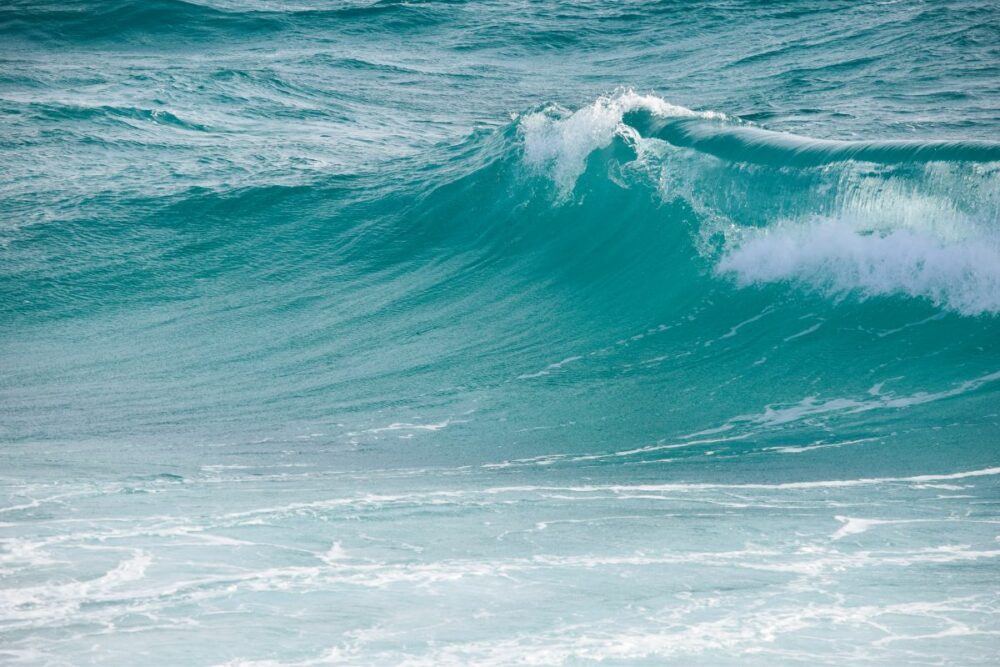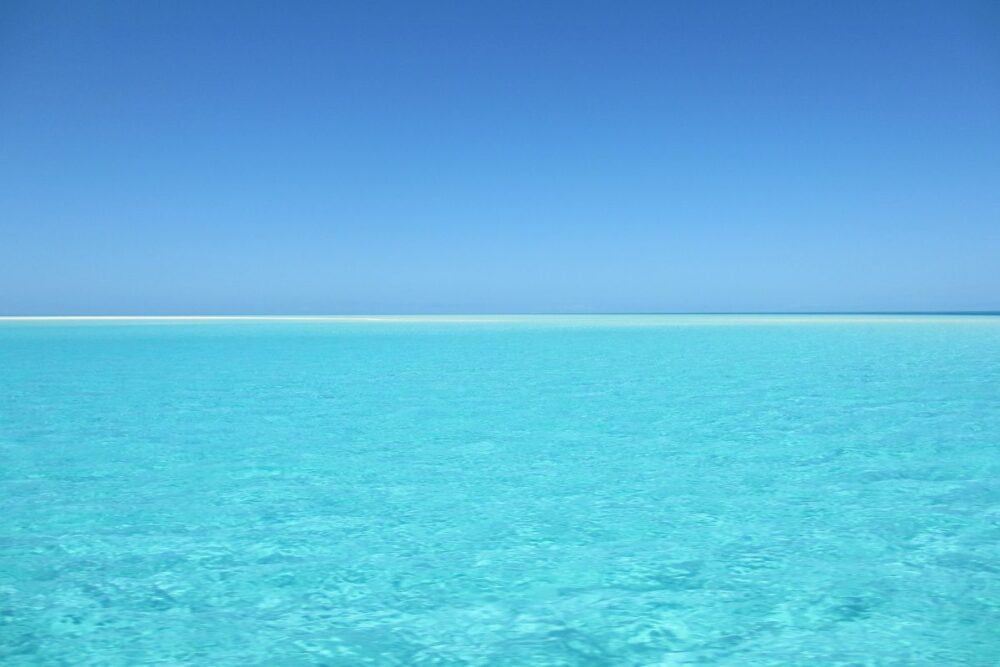As is the typical answer, the ocean appears to look blue, but as we all know if you have a smaller quantity of water, in a glass for example, it will be clear and not even have a blue tinge. So why is it that when you look at the ocean, that the water looks blue and does not look clear?
Also, why does the ocean occasionally appear to look other colors like darker shades. So, if you want to know why the ocean is blue, keep reading!

For a quick answer the reason why the ocean appears blue, is not because of any substance which is in the water which affects its color, but because of the way in which the light interacts with the water you are seeing.
The light which we use to see things is known as white light, and this light is made up of different colors which we see from the range of red down to violet.
These different colors have different wavelengths, and this affects how we perceive these colors. The color which has the longest wavelength is red, and the color which has the shortest wavelength is blue.
If you did not know the molecules which make up water are very good at absorbing light, particularly light which tends to have a longer wavelength. This means that the water molecules are able to absorb most of the red, the orange, the yellow, and the green light.
However, because the blue light has shorter wavelengths, it is much less likely to get absorbed by the water molecules, so with the light not being absorbed, it will instead affect the color of the water and will give it the blue color which we all recognize.
If you are looking for more detail on why the ocean is blue, keep reading to get all the details which you want!
More Detail On Why The Ocean Appears Blue?
When looking at shallow water, we recognize that this is more likely to look clear, than deeper water out in the ocean. We can recognize this when looking at water go up against the shoreline, and we will be able to see the sand appear through the water when it is more shallow.
The reason for this is that there are far less water molecules which are in the water, and these are what are absorbing the light. So with less water molecules absorbing the light, the more light which will get through, and this is what makes shallow water less blue, and easier to see through.
The inverse of this is true, that the deeper the water in the ocean gets, the more the colors will start to get absorbed because of the increased number of water molecules.
This means that the deeper you get in water, the deeper the shade of blue will be. If the water is deep enough, there will be so much light absorbed by the water that there will be no visible light and the water will be completely invisible.
Other Factors Which Influence The Color Of Water

There are other factors which are worth considering which will impact what color the water appears, as we know water does not always appear blue, with it sometimes being a more green shade, or sometimes even more brown.
One of the most simple ways in which water can have its color changed is by any particles which happen to be floating in the water. You may have notices in coastal areas that the water there instead of looking blue, will be much more murky and appear brown instead.
This is because water in coastal areas is more likely to contain sand which is from the sand bed, and this will float in the water because the sand has been churned up into the water by the waves, and will then impact the color of the water.
It is not just particles of dirt or sand which can affect the color of water, but also some living factors can impact how water appears and what color it is. A common example of this is phytoplankton.
Phytoplankton are smaller organisms which can behave similarly to plants. This is because they use chlorophyll just like plants do, and they use the chlorophyll to absorb sunlight and to use this to help them grow.
These phytoplankton are able to absorb both the blue and the red wavelengths of light, but instead of absorbing green light, this is instead reflected. So, if there is phytoplankton present in water, this is much more likely to make the water have a more green look compared to being clear or blue.
If you did not know, phytoplankton are incredibly important and are well known for being in charge of producing over 50% of the oxygen in the world. This phytoplankton is also important to marine food chains and webs as it tends to be the foundation.
Why Is Water In The Sea Salty?
If you have ever tasted or drunk seawater, you will know that it is very salty and unpleasant to taste. The salt content of the average seawater is around 3.5%.
The source of a significant amount of the salt which impacts the sea is sourced from hydrothermal vents, as well as undersea volcanoes, but just as much of the salt is also from the land.
Because of rain, the rain water is able to dissolve any minerals which are hits on land, and these minerals are able to release their salts on land. These salts will then be carried into the sea using rivers. Rivers may carry melt water from glacier containing silt from glacier that make mountain rivers turquoise and blue.
The sun is then able to warm up the sea, when this happens the water will evaporate, but the salt is unable to evaporate, so this means that the sea gets progressively saltier.
It has been estimated that close to 4 billion tons of salt will get into the sea annually, however, the sea does not start to taste saltier because a similar amount will end up getting deposited into the sea floor and this will ensure the saltiness is balanced.
- Sustainable and Luxurious: Discovering Split’s Yachting Paradise – April 26, 2024
- MarineTraffic vs VesselFinder: Which Is Better Vessel Tracking Service? – February 14, 2024
- Port Costs: A Comprehensive Guide to Port Dues and Fees for Cargo Ships – February 12, 2024





Leave a Reply